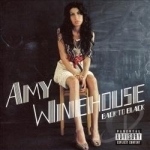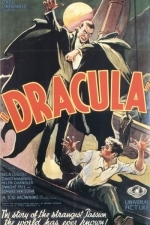Tom Jones recommended Back to Black by Amy Winehouse in Music (curated)

Square Fit Photo & Video Editor Insta-size Layout
Photo & Video and Productivity
App
Post full size photos and videos to Instagram without cropping! Move, rotate, scale and flip your...

Pianist Pro
Music and Entertainment
App
As featured in the Apple 'Your Verse' and 'iPad is Musical' TV Ads, recommended by The New York...

Drum School
Music and Education
App
Advanced groove library and drum learning tool for all levels. Whether you're a beginner or a pro,...
RəX Regent (349 KP) rated Dracula (English) (1931) in Movies
Mar 7, 2019
Tod Browning was a man who would unfortunately find little success in the sound era, but not necessarily because he couldn't move with the times, but because his career was derailed a couple of years later by his disturbing horror pic, Freaks.
Dracula was shot THREE times. One, this one, was the conventional sound version that we all know. An other was shot at night and in Spanish for the benefit of that audience, which the studio supposedly preferred. This was quite common at this time, but little known nowadays. And the third was a straight forward silent version for the many theatres still un-equipped to handle sound.
But the styles of the silent era are all over this film. From the long silent reactions shots and the over acting, especially by Bela Lagosi in the titular role. This was also the adaptation of the stage adaptation of Bram Stoker's chiller, and was faithfully adapted from that source, hence the lack of more complex special effects, with bats on strings and fog machines, over more cinematic effects.
The transformation scenes for example, where the Count morphs from a bat to the undead human occur off-screen, rather than some form of cross fade etc. Is this a choice driven by lack of money? Lack of cinematic ambition of a choice to stick to the stage material? To be honest, I have too little knowledge or experience of Tod Browning's work to suggest a reason, but when all's said and done, it did work.
Let's be honest, this is 80 years old and is not the least bit scary and it is hard not to laugh, but in context, I'm sure it worked well at the time and the story is well conveyed. Lagosi's undead performance is hammy by today's standards but he was somewhat likable. He was very deliberate, slow and the silent era has certainly left its scars, as the subtly of sound performing was yet to take hold.
But this is the sort of film were silent melodramatic acting still worked. This is of course a piece Gothic Horror, the home of melodrama if ever there was one. This is surly a product of its time, both as the industry went through one of it's most dramatic changes, which ended so many careers as well a created so many new ones, but it's also, let's not forget, the first direct adaptation of Bram Stoker's book, besides the 1922 German version, Nosferatu, which changes a fair few details to try to get around the copyright, failing to do so mind, resulting in failed bid to have every copy of the film destroyed.
This is the film that ingrained the image of the Dracula that we know today into popular culture. This was were the Universal horror franchise began. For whatever faults it has by today's standards, it did something right.

Color Therapy Adult Coloring
Book and Entertainment
App
#1 Coloring Book for Adults with MILLIONS of Addicted Coloring Artists! Download Now for FREE! Join...

Lovestruck Choose Your Romance
Games, Entertainment and Stickers
App
Lovestruck is your portal to the greatest interactive romance stories! Your happily ever after may...

Ding Top-up: Mobile Recharge
Utilities and Lifestyle
App
Recharge cell phones worldwide with Ding. Ding lets you send airtime to over 130 countries...

Guitar Jam Tracks : Reggae
Music and Entertainment
App
MAKES LEARNING GUITAR FUN Practice jamming, learning scales and soloing to a Reggae jam track in...


